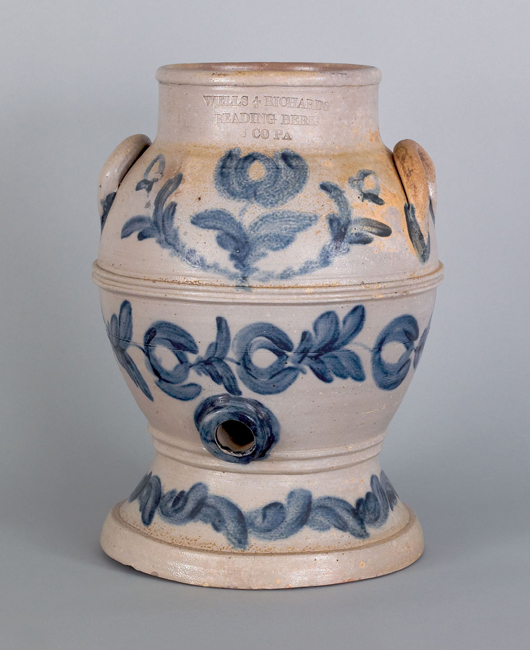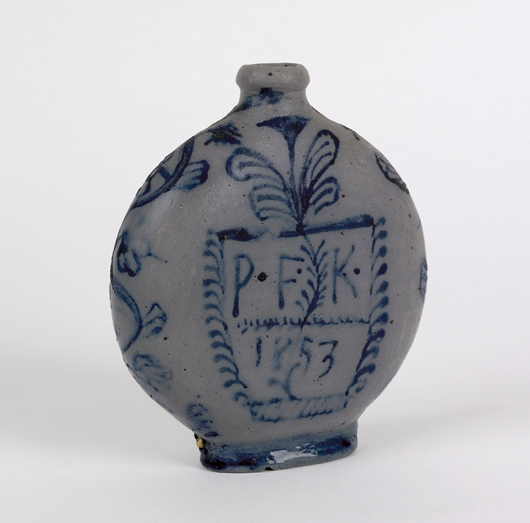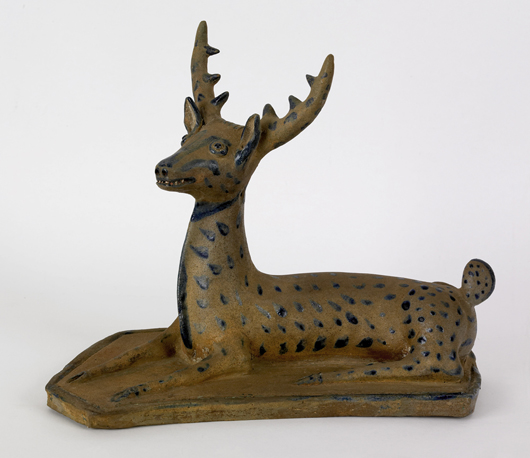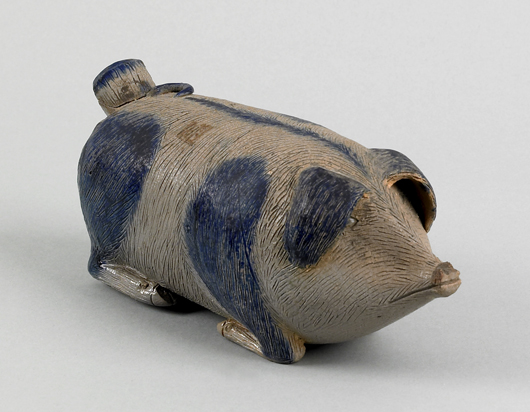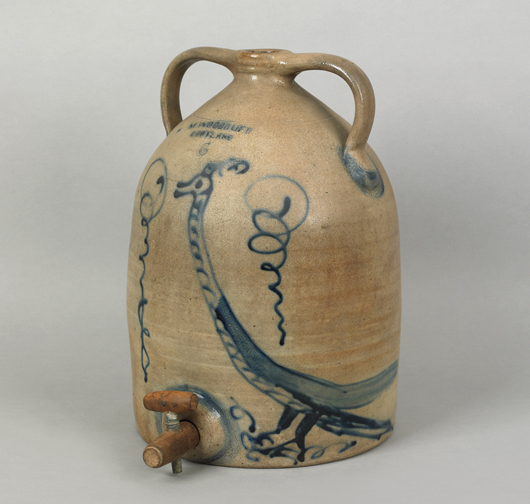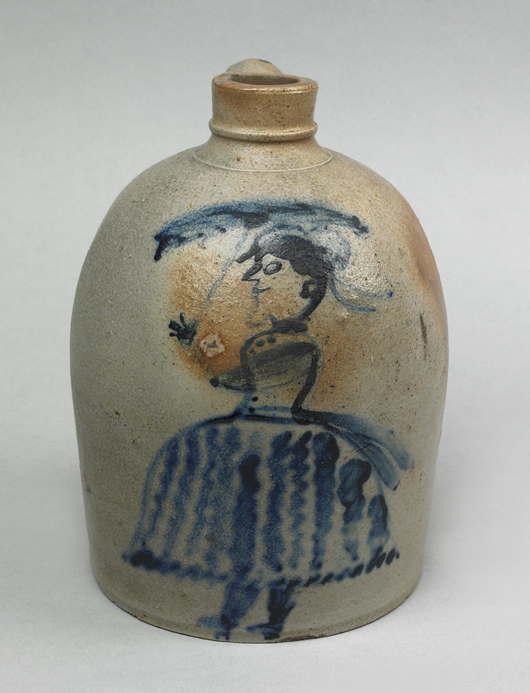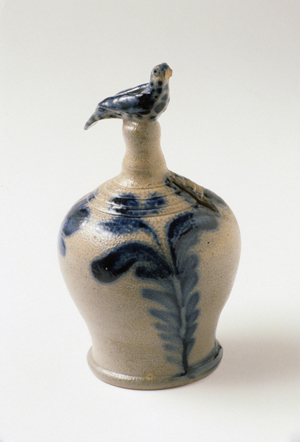
“Stoneware has maintained a strong collector interest, especially for the better pieces,” said Ron Pook of Pook & Pook Auctions in Downingtown, Pa. “It’s still very sought-after.”
The production of utilitarian stoneware was an early success story for American potteries. The newly united Colonies along the East Coast emerged from the Revolution still dependent on imports from across the Atlantic to fill basic needs.
Fine porcelain table services for the upper classes were shipped from Europe or China. Germany and England were supplying basic types of pottery for domestic and commercial use. George Washington had Chinese Export porcelain for best, and a good grade of white English stoneware for his “everyday dishes.”
International business practices that still annoy economists today were also common in the past. Ceramics expert William C. Ketchum Jr. wrote in his American Antiques volume on Pottery & Porcelain: “Periodically, British manufacturers ‘dumped’ large quantities of high quality ceramics on the American market, offering them at prices local craftsmen could not profitably match.”
Immigrant craftsmen had brought the necessary potting skills with them to this country. But before citizens could “buy American,” entrepreneurs needed to establish financially viable potteries near a good source of the proper clay. Small redware workshops, making simple dishes for local families, sprang up first. Collectors still prize these fragile but desirable pieces.
Clay to make more durable stoneware was harder to find. Deposits were eventually located in the Mid-Atlantic states and in Ohio. This production also required a larger operation with a more sophisticated kiln setup. Pioneering potteries were established in the 18th century, and stoneware manufacturing was flourishing in the country by the 19th century.
Better transportation made it easy to move raw materials to the factory and finished products to the consumer. The majority of forms for sale were various storage vessels, such as crocks, jugs, pitchers and bottles. Until the 1880s, most basic pieces were thrown on the wheel. Hard-to-find rarities, such as coin banks and figural pieces, were shaped by hand.
To create an impervious surface, most stoneware is salt-glazed. Ketchum described the process: “Quantities of salt were thrown into the kiln when the heat was most intense; the salt vaporized and combined with the outer layer of the pottery to form a clear, vitreous finish that is characteristically pebbled, resembling an orange peel.”
Modern collectors, however, do not crave stoneware simply because it comes in useful shapes and keeps the water out. Pursuing a creative whim, decorators often hand-painted whimsical patterns – flowers, animals, people – that add great value to individual pieces. Buyers also look for incised information about the name and location of the pottery and for dates, which were sometimes added by hand.
Ron Pook noted, “The market today is for the more unusual pieces. I go for the uniqueness of a piece. I look for brighter color, a deeper cobalt blue, and highly developed decoration or an unusual form. The appeal of stoneware lies in its folkiness. We had a water cooler in the April sale that was rather vibrant.”
This spring auction lot, a 19th-century salt-glazed stoneware water cooler, sold for $17,550. The piece bore a clearly stamped maker’s mark that read “Wells & Richards Reading Berks Co PA” which had strong regional interest to Pennsylvania collectors. Furthermore, the curved sides of the storage piece were covered with a cobalt tulip pattern painted freehand by the decorator.
Figural decoration commands the highest prices. During the auction of the Shelley Collection three years ago, Pook & Pook sold a 6-gallon water jug painted with a long-necked goony bird for $48,800 and a smaller jug with a rare lady with parasol figure for $53,820.
Museum exhibitions are excellent way to examine important examples of this pottery. Through July 10, the Brandywine River Museum in Chadds Ford, Pa., is offering Crocks, Jugs, and Jars: Decorated American Stoneware, a loan exhibition from public and private lenders. Many of the exhibits come from the excellent permanent collection at the Winterthur Museum and Gardens, just to the south in Delaware.
Two excellent references on the subject, both still available through used book services are Decorated Stoneware Pottery of North America by Donald Blake Webster (1971) and American Stoneware by William C. Ketchum Jr. (1991).
Although collectors are most familiar with the salt-glazed stoneware featuring cobalt designs that was produced in New England, Pennsylvania and Ohio, other types of stoneware with alternative glazes and decoration was produced in the South during the 19th century. More on this subject will appear in the next Ceramics Collector devoted to Southern pottery.
ADDITIONAL LOTS OF NOTE
